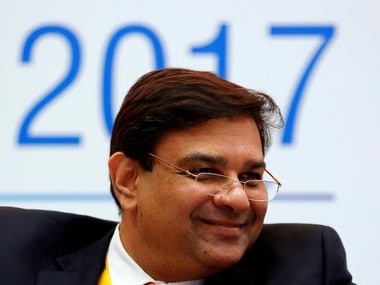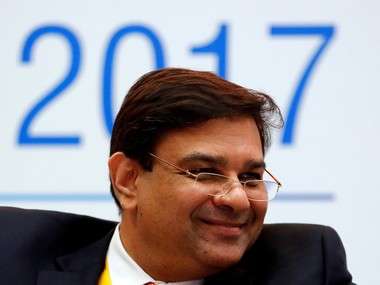New Delhi: The Reserver Bank of India (RBI) Governor Urjit Patel abruptly resigned on Monday, citing personal reasons, after a prolonged public spat between the institution and Prime Minister Narendra Modi’s government. [caption id=“attachment_3891795” align=“alignleft” width=“380”]
 File photo of Urjit Patel, governor, RBI
Reuters[/caption] The government has been putting pressure on the Reserve Bank of India (RBI) to ease lending curbs and capital requirements and gain more of the RBI’s capital reserves to help fund a fiscal deficit and boost a slowing economy ahead of national elections due by May. The RBI, which holds a policy meeting on 14 December, has been reluctant to agree to all of the demands. Following are key events in the lead-up to Patel’s resignation: 7 August: Government appoints Swaminathan Gurumurthy, a prominent supporter of Narendra Modi’s BJP party and an affiliate of Hindu nationalist group Rashtriya Swayamsevak Sangh (RSS), and Satish Marathe, a former banker and RSS supporter, to the RBI board. 10 October: Government appoints retired bureaucrat Revathy Iyer and Sachin Chaturvedi, head of a Delhi-based think tank, to the board. Removes Nachiket Mor, who was close to RBI officials. 19 October: The central bank issues a rare public objection to a government-led panel’s recommendation for payments systems to be overseen by a regulator that would be set up outside the RBI’s control. The proposal overruled the RBI’s recommendation that its governor should be head of the payments regulator. 26 October: RBI Deputy Governor Viral Acharya says undermining RBI’s independence could be ‘potentially catastrophic’. 29 October: Senior officials tell Reuters they are upset with the central bank for publicly talking about a rift with the government, fearing it could tarnish the country’s image among investors. 30 October: Finance Minister Arun Jaitley blames the central bank for failing to stop a 2008-2014 lending spree that left commercial banks with $150 billion of bad debt. 30 October: Finance ministry officials discuss issues related to the liquidity crunch with the RBI and other market regulators. 31 October: Indian media say Patel may consider resigning given a breakdown in relations, and that the government has invoked never-before-used powers to direct the central bank governor on matters “of public interest” related to support for the financial sector and small companies. 31 October: Amid investor concerns about the public row with the RBI, the government calls the central bank’s autonomy ’essential’. 1 November: The head of a Hindu nationalist group calls for Patel to work in sync with the government to support economic growth or step down. 6 November: The government intends to keep pressing demands for the central bank to relax lending curbs and hand over surplus reserves, even if that risks provoking the RBI governor’s resignation, sources tell Reuters. 12 November: Patel meets Prime Minister Narendra Modi to discuss flashpoints, Indian media report, citing sources. 16 November: The government is to form panels to monitor functions of the central bank such as financial stability, monetary policy transmission and foreign exchange management, Bloomberg reports. 19 November: After a nine-hour meeting, the RBI board advises the central bank to act to support small businesses and give banks more time to meet capital requirements. 19 November: The RBI decides to set up a panel in conjunction with the government to examine the bank’s economic capital framework. 5 December: The RBI keeps interest rates unchanged and retains its ‘calibrated tightening’ stance. The government welcomes the MPC’s assessment but says it believes the policy stance “probably required calibration”. 6 December: An RBI sub-committee did not discuss easing lending curbs facing 11 state-run banks despite intense government pressure to take a softer stance, a source close to discussions says. 10 December: Governor Urjit Patel resigns.
The Reserve Bank of India (RBI) Governor Urjit Patel abruptly resigned on Monday, citing personal reasons, after a prolonged public spat between the institution and Prime Minister Narendra Modi’s government.
Advertisement
End of Article


)

)
)
)
)
)
)
)
)



